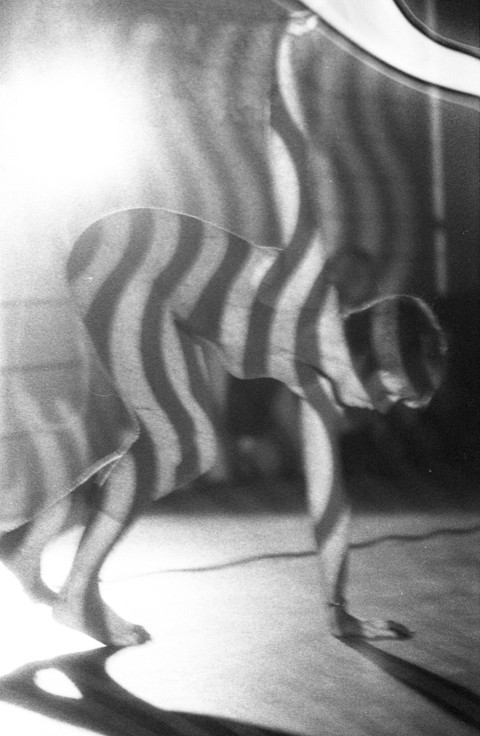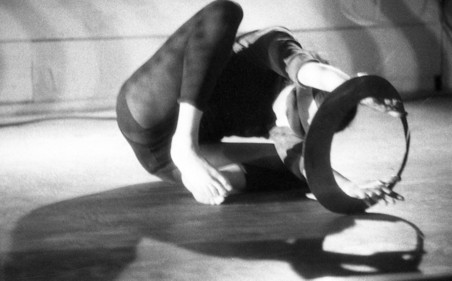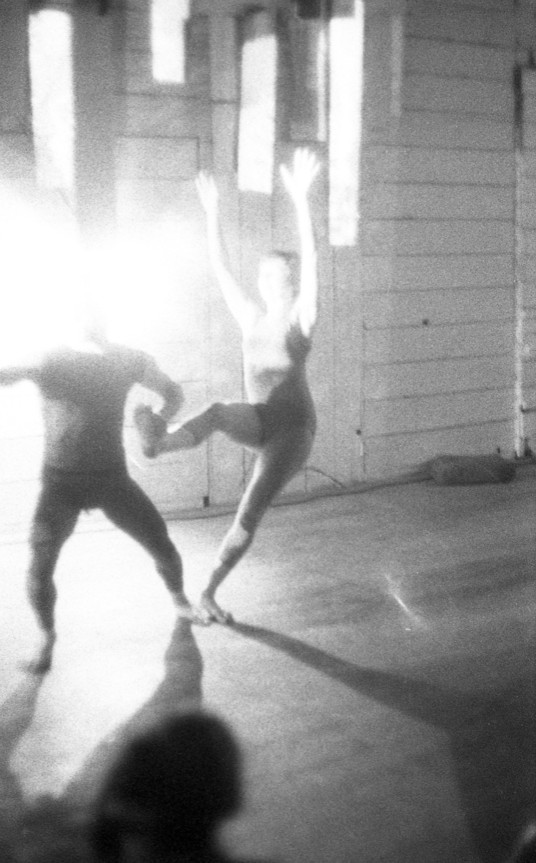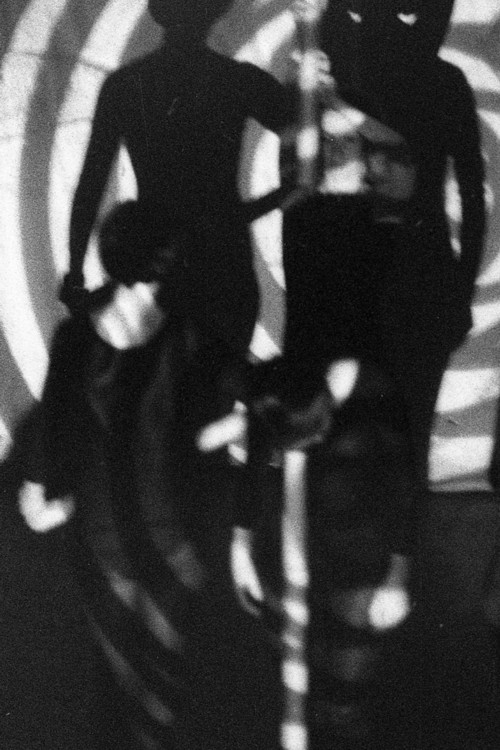In the fall of 1965, I was an aspiring 18
yr. old
jazz drummer, who was also a fledgling painter and art student.
Having come from a family
where my mother, Ferne Cairns, was a
concert
soprano and my father, Douglas
Simpson, a pioneering west coast Modernist architect, my
fate
was sealed to either choose between the two mediums of music and painting, or
somehow juggle both of them at
the same time. To me this was something
akin to choosing between breathing and eating so I decided to try
to progress in both mediums. To that end I rented a small (30’ x 60’) storefront at West
4th Avenue and Bayswater in
Vancouver's
Kitsilano area.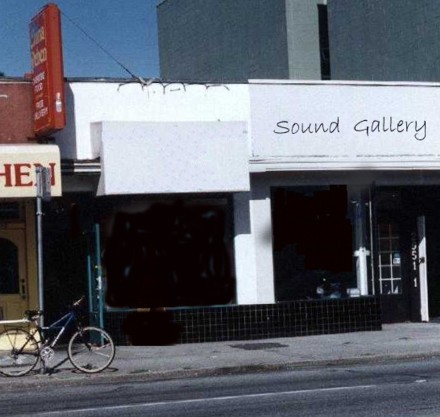 Sound Gallery, the store front at 4th and Bayswater.
Earlier in the year I had made the acquaintance of jazz pianist Al
Neil
who I had seen play live twice in Vancouver jazz venues and once on CBC television
from the Cellar,
a legendary club which among other claims to fame had been the place that gave the ground
breaking Ornette Coleman
Quartet
their first concert outside of the U.S. in 1958. It had also featured through the
50's and 60's the groups
of Charles
Mingus, Art Pepper, Harold Land and
many more west coast hard bop bands of that caliber. Al Neil was
usually
the house pianist for these visiting greats.
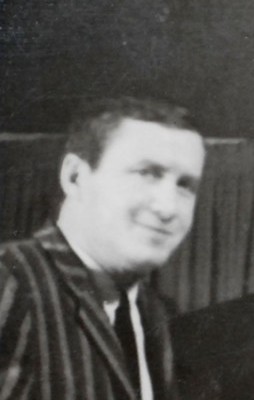 Al Neil at the Cellar in the late 1950's
Significantly the Cellar was also where future
Intermedia Director, Barry
Cramer,
produced plays such as Krapp's Last Tape and other works by the
writers of the Theatre of the Absurd. Vancouver,
it seems, has always had a tendency to investigate a mixed media approach to
the arts and this has been
evident
through several decades since Al Neil recorded with the beat poet, Kenneth
Patchen, on the Folkways label
producing a very well received album.
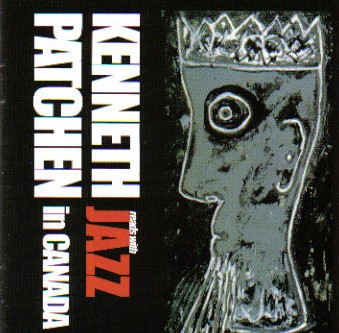 Kenneth Patchen Reads Poetry In Canada (With the Alan Neil Quartet).
In 1965, after an initial introduction to Neil
and his wife at the time, Marguerite,
in their small cottage wedged behind some highrise apartments in the West End, a life long
relationship began. I was
brought to meet Al Neil by one of Vancouver's other legendary figures of the beat era,
Curt Lang, a poet and painter
who had once been taken by fellow poet the late Al Purdy to meet Malcolm Lowry
at
his Dollarton Beach house on
the North Shore, not far from the spot where Neil himself landed a decade or
more later. (This has been well
documented in the recent book, At
the World's Edge, Curt Lang's Vancouver, 1937-1998 by Claudia Cornwall). 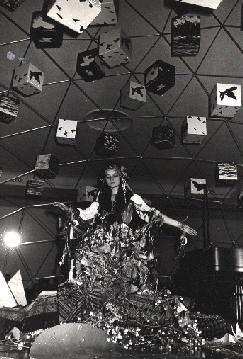 Marguerite
Neil in concert with the Al
Neil Trio
at the Intermedia Dome Show, 1970
There was an immediate current of excitement as I
realized that after
abandoning
any regular career choices I
might indeed be on the threshold of a unique musical enterprise with Al
and bassist Richard
Anstey, who I had been
playing with in groups such as the New Dimension Jazz Trio and
with
Bob Buckley was also playing
with Al's group at the Flat Five Jazz Club on West Broadway.
Our first musical strategy session was an eye opener. Al was pretty loaded the night he hauled out his little electric Wurlizter piano with its fragile reeds, half of which he managed to break while slipping from the piano stool to the floor at least three times. The 'score' for the music he was about to played me consisted of chopped up music paper collaged together with fragments from popular magazines, including some 'girlie' pictures. Al was playing a kind of tortured, mystical and lyrical music I could only describe as a cross between Bud Powell, Charles Ives and Debussy. I know, however, that Al hadn’t yet heard the work of a musician he superficially resembles, the tumultuous New York pianist, Cecil Taylor, whose music was just beginning to be known in Vancouver in 1965. But at that time, Al had already came up with his own lyrical, yet cataclysmic, style completely on his own. Although an authentic hard bop musician, Neil worked in so many other influences from pioneer Dadaists like Kurt Schwitters, painters like Bradley Tomlin and Mark Tobey to the cut-up writings of William S. Burroughs, works on alchemy and mysticism, and the fevered visions of the French surrealist, Antonin Artaud, that a multi-media kind of jazz was bound to occur from the collaboration we were embarking on. on. For the first two rehersals the Al Neil Trio was actually a quartet with the presence of altoist Bob Buckley who later went on to fame and fortune with the rock band Spring and later as a producer. For some reason or other the trio of Al on piano, Richard Anstey on bass and myself on drums was what emerged and by late fall we were rehearsing regularly at the little store front which eventually opened as the Sound Gallery.
Because I also need somewhere better to paint than the family
home,
the studio at 4th and Bayswater became a multi-media operation from the beginning.
First I drew from the
model
there and continued working on a series of abstract oil paintings
which reflected the influence of late
Modernist
geometric painting. The place was unheated and several little electric space heaters
were employed to keep things
bearable as winter approached. 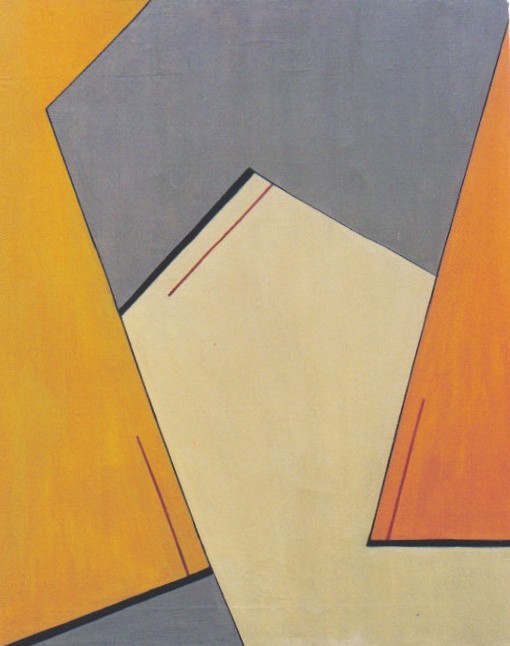 Manifestations of Calm Gregg Simpson: oil on canvas, 1965 (a work installed in the Sound Gallery) As the little circle of friends who came to the studio expanded there was a movement started to have sessions and everyone chipped in on the rent to keep the place going. Fledgling poet Michael Coutts was a regular, although, he like many others who participated in the period, didn't survive the 60's . Richard Anstey, who lived in the area of the studio also brought in other neighborhood buddies like drummer Harley McConnell, who helped me put together a drum kit for the great drummer, Philly Joe Jones then blowing the roof off with Harold Land over at the Blue Horn, formerly the Flat Five. To this day I credit my contact with Philly Joe as the major influence which formed my playing style although with the Al Neil Trio waiting in the wings this was one of the last times I played bebop jazz until a decade or so later. The first recording session at the studio as it was still referred to was on December 15th, 1965 and the Al Neil Trio played several improvised pieces for a small audience. The music was nothing short of extraordinary, combing snippits of melodies like Summertime, or a blues, which appeared through waves of arpeggios, polychromatic chord clusters, whirling dervish modal lines and atonal passages. We were still playing jazz we all thought, especially in Anstey and my case as we were both very recently influenced by the work of the John Coltrane Quartet and of Charles Mingus. who we had seen live together at the Blue Horn. Al liked to perplex other musicians when they asked what all this stuff was and he would say, “ I like to think I'm still playing jazz”!(photo by Michael deCourcy) This was no easy thing to explain. The Trio had a unique empathy for improvisation not unlike a group like the Bill Evans Trio. Although much more frenzied, it did have some of the interwoven, independent melodic lines of the Evans group . But that was when something like a tune or song form was involved. What was unique to this group was the way it could move into non-verbal chanting, collaged textures utilizing toy instruments, tapes, records or radios and still keep the feel of a jazz trio. Noise music mixed with political protest was employed on one of a kind pieces like State of the Union where a radio speech by then President Johnson on Viet Nam was smothered in clattering textures and insane shrieking, all recorded in a totallydarkened Sound Gallery. It was a long way from bebop.
By March, 1966 after a month long hiatus from Al, Richard
Anstey and myself returned from playing an engagement at a Banff hotel and we
were back at the old studio
and
ready to take things up a notch. During the winter I had thought of the
name Sound Gallery for the space and as
it seemed to be a hit with everyone, we designated it as such for a series of weekend
concerts which began in March.
Advertising
was a large piece of construction paper hung in the window with stenciled letters
advertising: Al
Neil
and his Royal Rascals represented by some campy collage elements. Admission was by
donation as we had been
told we could avoid hassles with the authorities that way. For a later concert
at the Kit's Theatre the group became the Royal Canadians.
Also around that time we started to invite others into the evening
concerts. The first new participant to arrive at the Sound Gallery was composer Gerry Walker , a new music composer who worked with tape and prepared piano in the era before synthesizers. He shared a studio four blocks down 4th Ave.with film maker Sam Perry who was to become the guru for multi-media presentation in the next year, the last of his life. The atmosphere in their studio was a little like a laboratory in a 50's sci-fi movie. It was a perfect complement to our operation down the street and a collaboration seemed inevitable and natural.
Almost immediately the Saturday night concerts at the Sound Gallery
became
a place for poets, artists and dancers to collaborate. Among those who
appeared were painter Gary
Lee Nova who had just shown a remarkable set of hexagon shaped
paintings at the UBC Fine Arts Gallery and
would go on to collaborate with Perry on the making of imagery for the light shows, a name that wasn't
being used yet
in Vancouver. 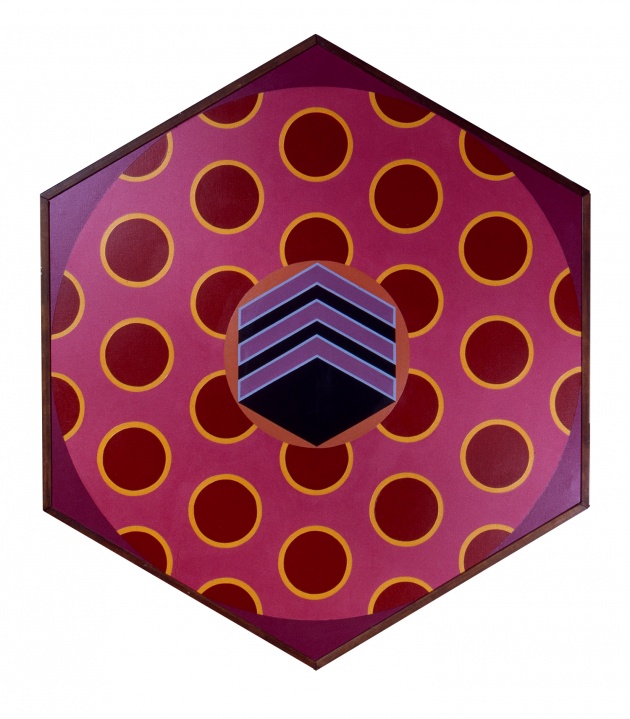 Gary Lee Nova: Dreadnaught acrylic on canvas, 1966 Soon after we were joined by dancer/choreographer Helen Goodwin who had recently worked with New York-based Jean Erdman, a pioneer performance/ dance artist. The Sound Gallery cast was assembling and it included the Al Neil Trio's music, Sam Perry's films and projections, the Helen Goodwin dancers, composer, Gerry Walker and often a poet.
Poetry was an important medium in the 1960's and readings were given
regularly
at the Sound Gallery. One notable one was by Milton Acorn
which was a raucous affair as
always
with the crusty writer. Also in attendance were bill
bissett, Gerry Gilbert and
Judith Copithorne, the latter also one of Goodwin's dancers.
One memorable solo piece,
involved Copithorne improvising a dance which
evoked flying to one of the Trio's melancholic ballads, with Perry's
projected film of an actual flying
bird
playing over her. It was one of the best pieces in thecollective repetoire.
Copithorne
stayed with Goodwin for
a number of years through the Intermedia period, but later preferred to work
solely as a poet, producing several
books of verse and visual poetry done in a
beautifuly fluid calligraphy. her credit. Two others in Goodwin's
company also became noted
perfomers later, Karen Jameison and Evelyn
Roth. In addition she employed other modern dancers, such as Heather
MacCallum, Judith Shwartz, Rita Watson
and Joan Payne. The spawning ground for both Helen Goodwin, and most of the poets, was the University of British Columbia where the remarkable English professor, Warren Tallman, a friend of both Allen Ginsberg and Charles Mingus among others, taught during the 1960's and 1970's. The group of poets who published the periodical TISH including Jamie Reid, Peter Auxier, Maxine Gadd, Dan MacLeod and later, Jim Brown, all participated in the earliest days of multi-media in Vancouver. The poetry scene was the most advanced and communicative of any of the groups in Vancouver then. The University of British Columbia during the 1960s was a revolutionary cauldron of poetry, left wing politics and ground-breaking art exhibitions and festivals. The Fine Arts Gallery, under the direction of Alvin Balkind who formerly ran the New Design Gallery downtown, the first to show Claude Breeze, Audrey Capel Doray, Joy Long, Toni Onley and Jack Wise to a wider audience. The dynamic survey exhibition, Joy and Celebration at The Fine Arts Gallery in 1967 brought together several artists who would later work at Intermedia. The 1965 Armory Show and the1967 Festival of Contemporary Arts were two other important events which brought together artists, poets and musicians from B.C. and across Canada including such luminaries as Leonard Cohen and Margaret Atwood. The experimental media experimenter and puppeteer Dave Orcutt was one of the figures who emerged from this milieu and was to be an early instigator of the Intermedia Society. The events at the Sound Gallery were getting increasingly popular and by June we realized that a larger space was going to be necessary. The crowds in the 30' by 60' store front were making it increasingly difficult to fit in an audience with the band, dancers and projectionists Perry, Lee Nova and another artist of the period, Dallas Selman, who, along with audio/electronic innovator, Ken Ryan, worked at Sam Perry's 4th Avenue studio. The problem was solved when Helen Goodwin's husband, a local realtor, came up with a reasonably cheap old building at 1236 Seymour Street on the edge of Vancouver's downtown. MOTION
STUDIO
|
